Is Too Much Celery Bad for Guinea Pigs? A Comprehensive Guide
If you’re a guinea pig owner, you’re probably familiar with the importance of a healthy diet for your furry friend. While hay and fresh water should make up the bulk of your guinea pig’s diet, adding fresh fruits and vegetables can provide important vitamins and nutrients. Celery is a popular vegetable that many guinea pig owners wonder about. Is too much celery bad for guinea pigs?
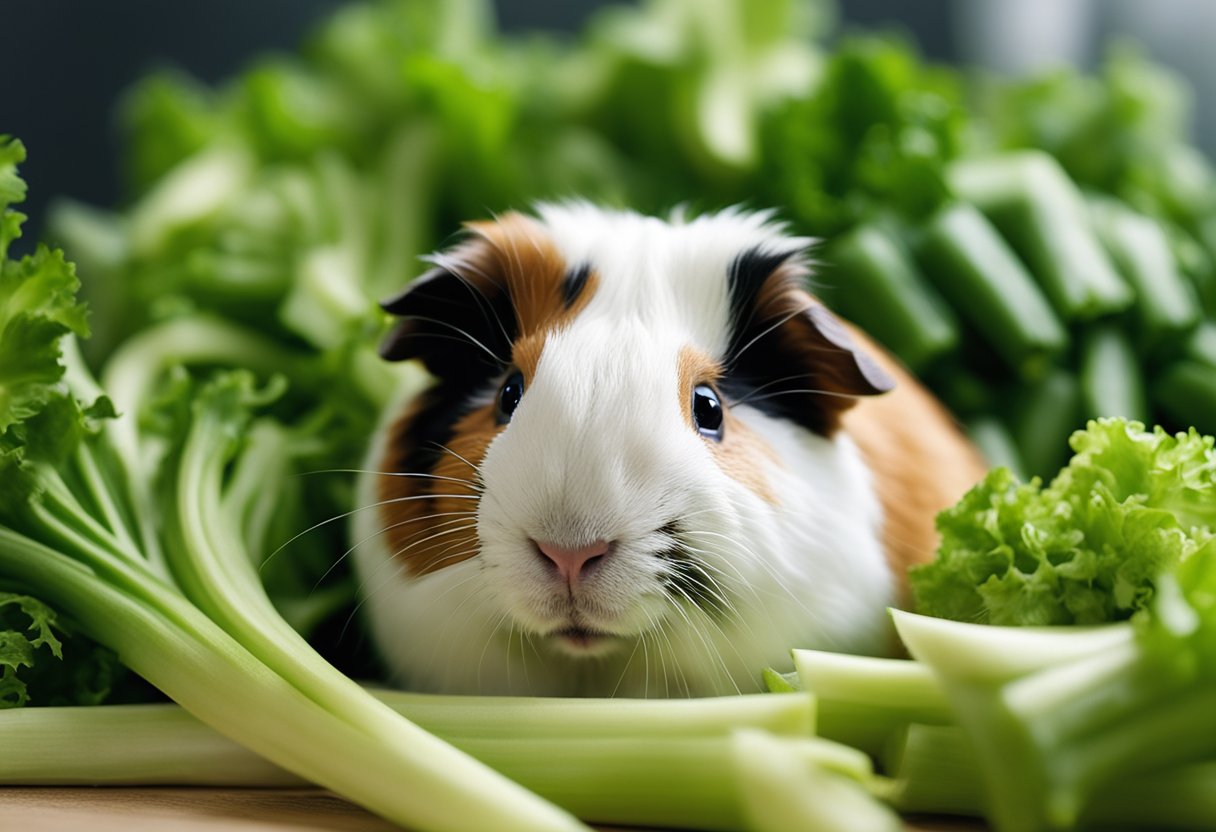
Celery is a nutritious vegetable that is safe for guinea pigs to eat in moderation. According to Vet Explains Pets, a small amount of celery as a treat on occasion is totally fine and your guinea pig will likely love it. However, it’s important to remember that moderation is key. Feeding too much celery to your guinea pig can lead to digestive issues and other health problems.
When it comes to feeding your guinea pig celery, it’s important to follow safe feeding practices. Always wash the celery thoroughly before feeding it to your guinea pig to remove any dirt or pesticides. Cut the celery into small, bite-sized pieces to make it easier for your guinea pig to eat. And remember to always introduce new foods slowly to avoid upsetting your guinea pig’s digestive system.
Nutritional Impact of Celery on Guinea Pigs
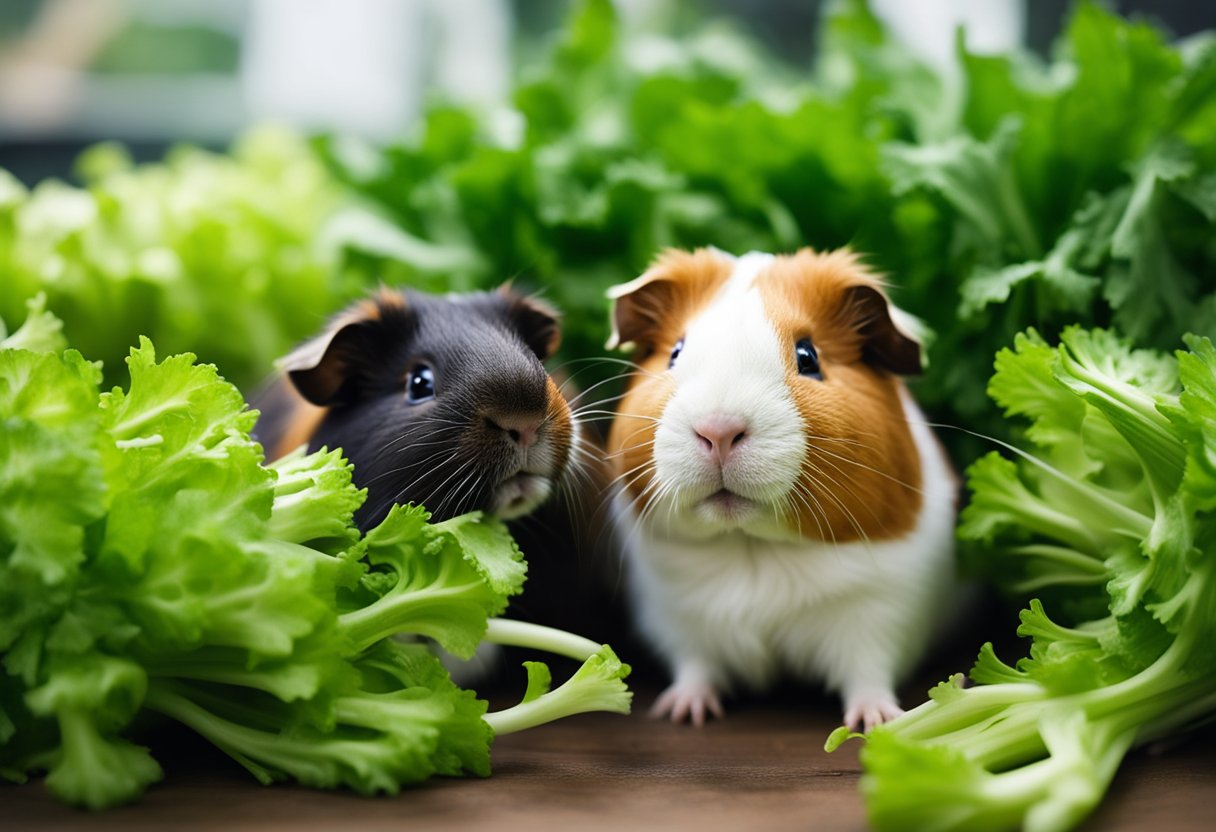
Guinea pigs are herbivores that require a diet high in fiber, vitamin C, and other essential nutrients to maintain their health. Celery is a popular vegetable that many guinea pig owners feed to their pets. While celery can be a healthy addition to a guinea pig’s diet, it is important to understand the nutritional impact of celery on guinea pigs to avoid overfeeding and ensure a balanced diet.
Vitamin Content and Benefits
Celery is a good source of vitamins and minerals that are essential for guinea pigs. It is particularly rich in vitamin C, which is important for guinea pigs because they cannot produce it on their own. Vitamin C helps to boost the immune system, promote healthy skin and coat, and prevent scurvy.
Celery also contains other vitamins like vitamin K, which is important for blood clotting, and vitamin A, which is important for vision and immune function. Additionally, celery is a good source of fiber, which helps to promote healthy digestion and prevent digestive problems like constipation.
Risks of Overfeeding Celery
While celery can be a healthy addition to a guinea pig’s diet, overfeeding can lead to health problems. Celery contains a moderate amount of calcium, which can be harmful in excess. Too much calcium can lead to urinary tract problems like bladder stones and urinary tract infections.
Celery also contains a moderate amount of oxalates, which can interfere with calcium absorption and contribute to the formation of bladder stones. Overfeeding celery can also lead to weight gain and obesity, which can increase the risk of other health problems like heart disease and diabetes.
Appropriate Serving Sizes
To avoid overfeeding celery to your guinea pig, it is important to feed it in moderation. A good rule of thumb is to feed your guinea pig a 1-3 tablespoon-sized amount of celery per serving. If your guinea pig does not eat all of their fruits and vegetables within 12-24 hours, then you need to dispose of it for them. You should also mix celery with other vegetables to provide a balanced diet and limit the serving of celery to 1-2 times a week.
In conclusion, celery can be a healthy addition to a guinea pig’s diet if fed in moderation. While celery is rich in vitamins and minerals, overfeeding can lead to health problems like urinary tract problems, weight gain, and obesity. By understanding the nutritional impact of celery on guinea pigs and feeding it in appropriate serving sizes, you can help to ensure that your guinea pig maintains a healthy and balanced diet.
Feeding Practices for Guinea Pigs
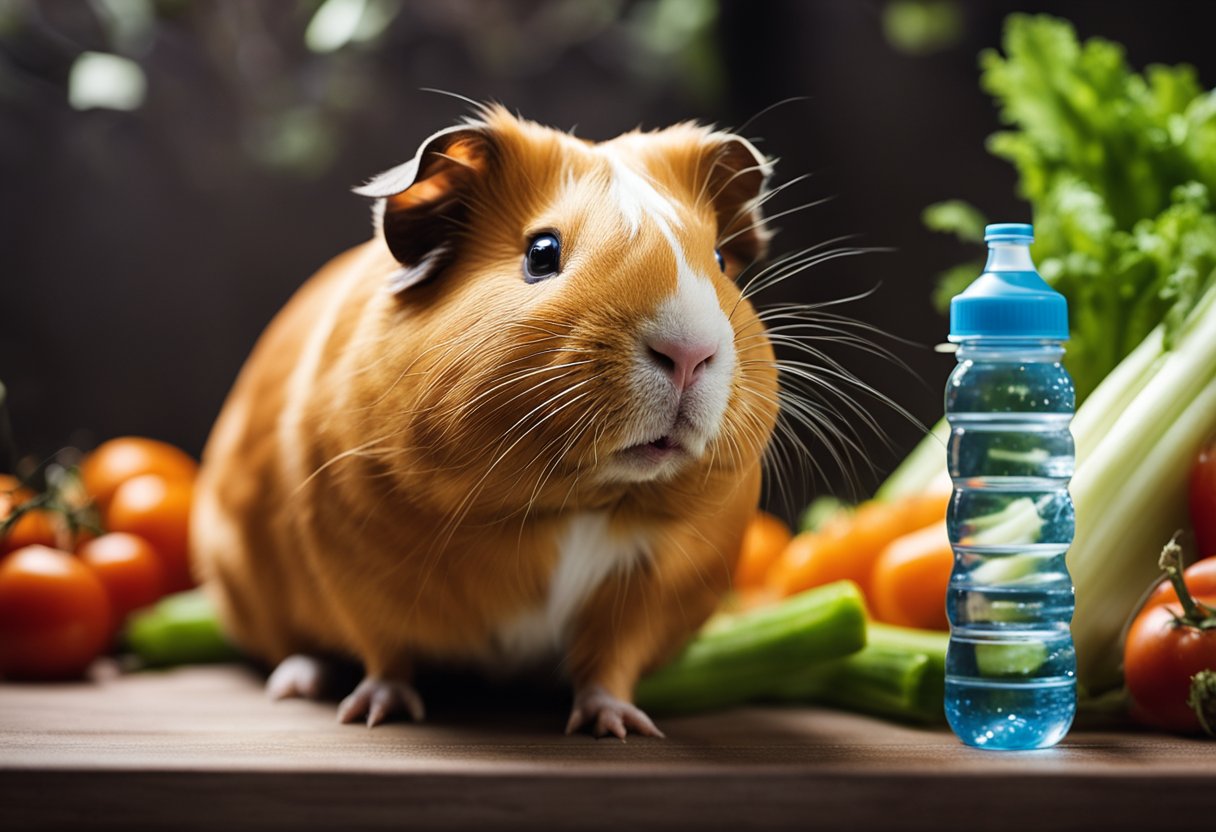
Guinea pigs are herbivores and require a diet that is high in fiber and vitamin C. It is important to provide them with a balanced diet that includes a variety of vegetables, fruits, and hay. Celery is one of the many vegetables that guinea pigs can eat, but it is important to understand the appropriate feeding practices to ensure their health and well-being.
Dietary Diversity
Guinea pigs require a diverse diet to meet their nutritional needs. Feeding them the same foods every day can lead to nutrient deficiencies and health problems. Therefore, it is important to provide them with a variety of vegetables, fruits, and hay. Some vegetables that guinea pigs can eat include bell peppers, carrots, cucumbers, and leafy greens. Fruits that are safe for guinea pigs to eat include apples, bananas, and berries. Timothy hay is an essential part of their diet and should be available at all times.
Frequency of Feeding Celery
While celery is safe for guinea pigs to eat, it should be given in moderation. According to Vet Explains Pets, a 1-3 tablespoon-sized amount of celery is enough for one guinea pig. Overfeeding celery can lead to health problems such as urinary tract problems and bladder stones, especially if your guinea pig is already prone to these conditions. Therefore, it is important to limit the amount of celery you feed your guinea pig and to provide it as an occasional treat.
Alternatives to Celery
If you are concerned about feeding your guinea pig too much celery, there are alternative vegetables that you can feed them. Some vegetables that are similar to celery in nutritional value include bell peppers, cucumbers, and zucchini. These vegetables are safe for guinea pigs to eat and can be given in moderation as part of a balanced diet.
In summary, feeding your guinea pig a diverse diet that includes a variety of vegetables, fruits, and hay is essential for their health and well-being. While celery is safe for guinea pigs to eat, it should be given in moderation and as an occasional treat. Providing your guinea pig with alternative vegetables that are similar in nutritional value to celery can also help ensure their health and well-being.
Resources
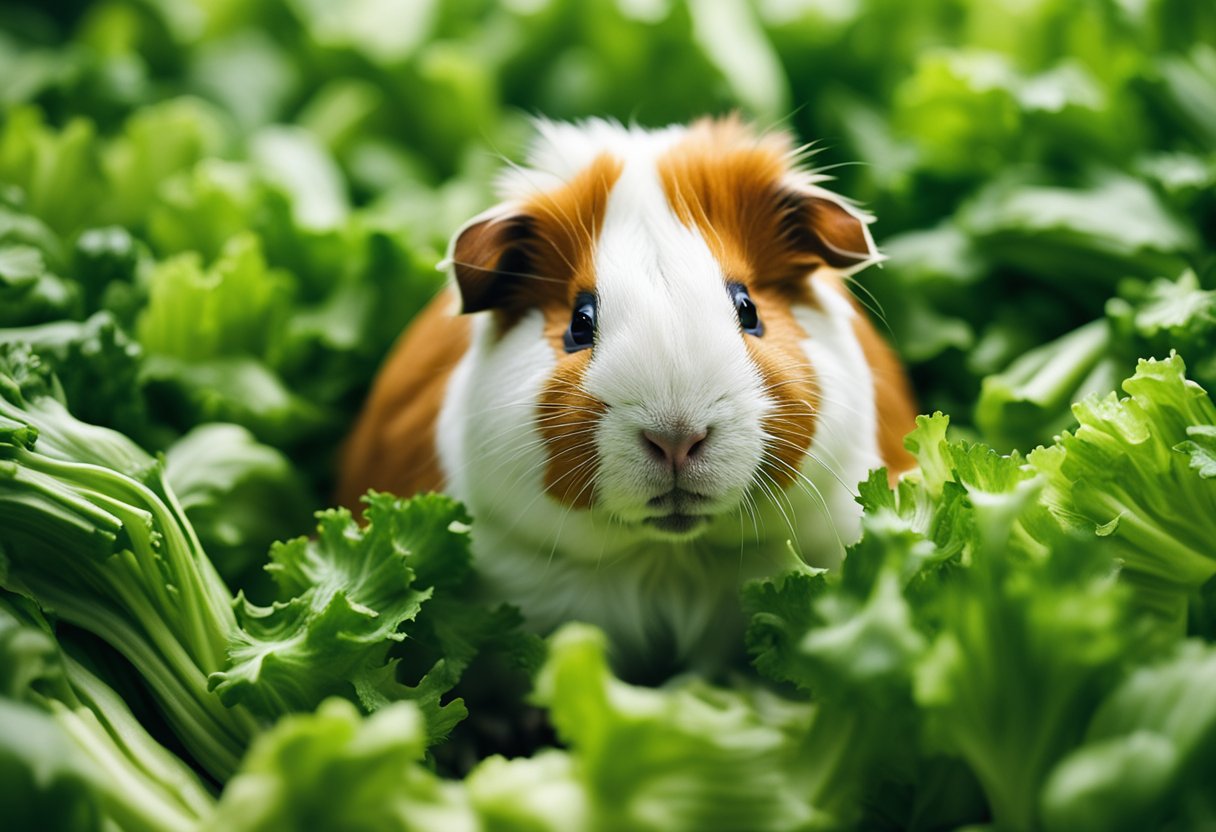
If you are considering adding celery to your guinea pig’s diet, it’s important to do your research to ensure that you are providing a healthy and balanced diet. Here are some resources that can help you make informed decisions about feeding celery to your guinea pig:
- Vet Explains Pets: This website provides a brief overview of whether guinea pigs can eat celery, how much they can eat, and what to watch out for.
- Pet Keen: This website offers a more in-depth look at the nutritional content of celery and how it can benefit your guinea pig’s health.
- Squeaks Scales and Tails: This website provides a balanced view of the pros and cons of feeding celery to your guinea pig, including potential side effects and how to avoid them.
- My Pet Guinea Pig: This website offers a detailed breakdown of the nutritional content of celery and how it can fit into your guinea pig’s overall diet.
Remember, while celery can be a healthy addition to your guinea pig’s diet, it should be fed in moderation and always as part of a balanced diet. If you have any concerns or questions about feeding celery to your guinea pig, consult with your veterinarian or a qualified animal nutritionist.
Conclusion
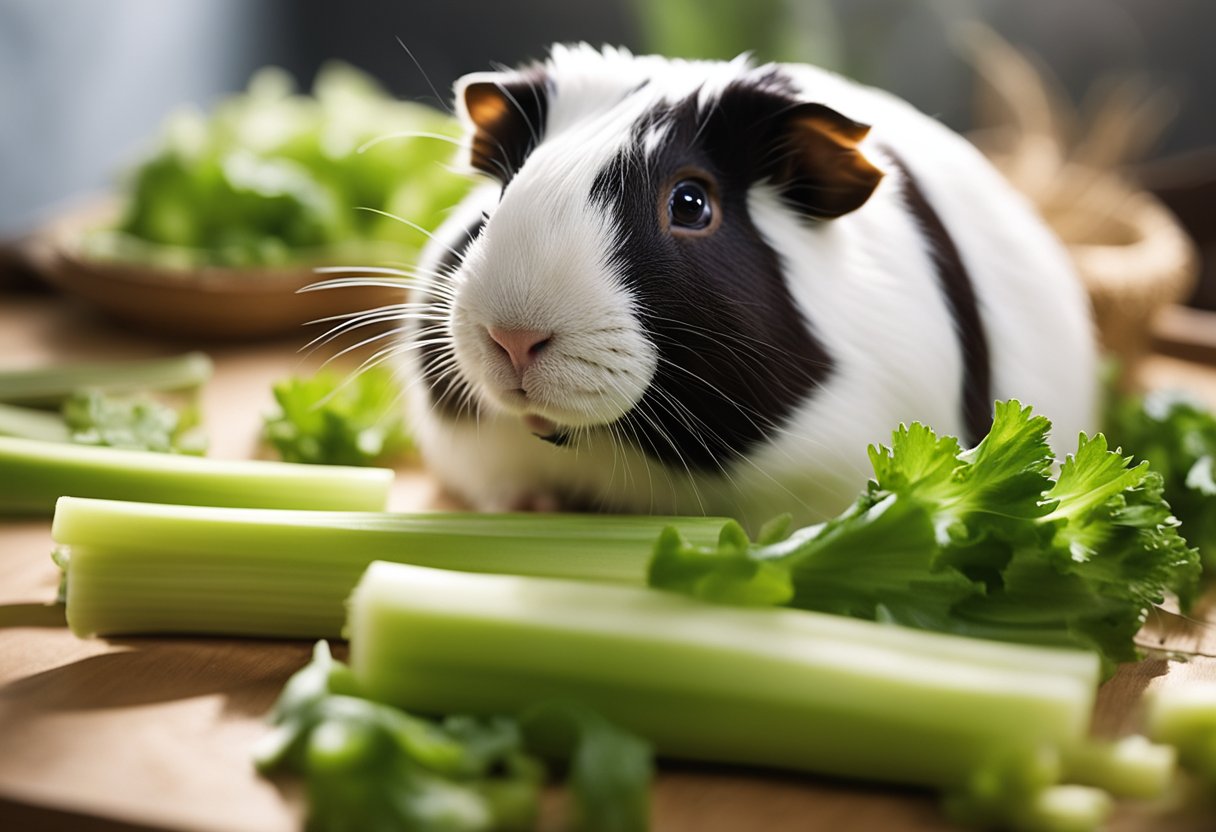
Celery can be a healthy addition to your guinea pig’s diet, but it should be given in moderation. As we have seen, celery is a good source of vitamins and minerals that your guinea pig needs to remain healthy and active. However, too much celery can lead to health problems such as diarrhea, bloating, and gas.
When serving celery to your guinea pig, it is important to remember that it should not be the only vegetable in their diet. You should mix it with a cup of other veggies to make a complete balanced diet for your guinea pigs. You should only feed 1/6 of a stalk along with its leaves at a time. Limit the serving of celery to 1-2 times a week.
Always clean the cage after the guinea pig is done eating in order to prevent any bacterial growth. If your guinea pig doesn’t eat celery, you can mix celery with other vegetables or even with fruits. That way, your guinea pig will have celery salad.
In summary, celery can be a healthy treat for your guinea pig when given in moderation. Make sure to include a variety of vegetables in your guinea pig’s diet and always monitor their health for any signs of digestive issues.
Frequently Asked Questions
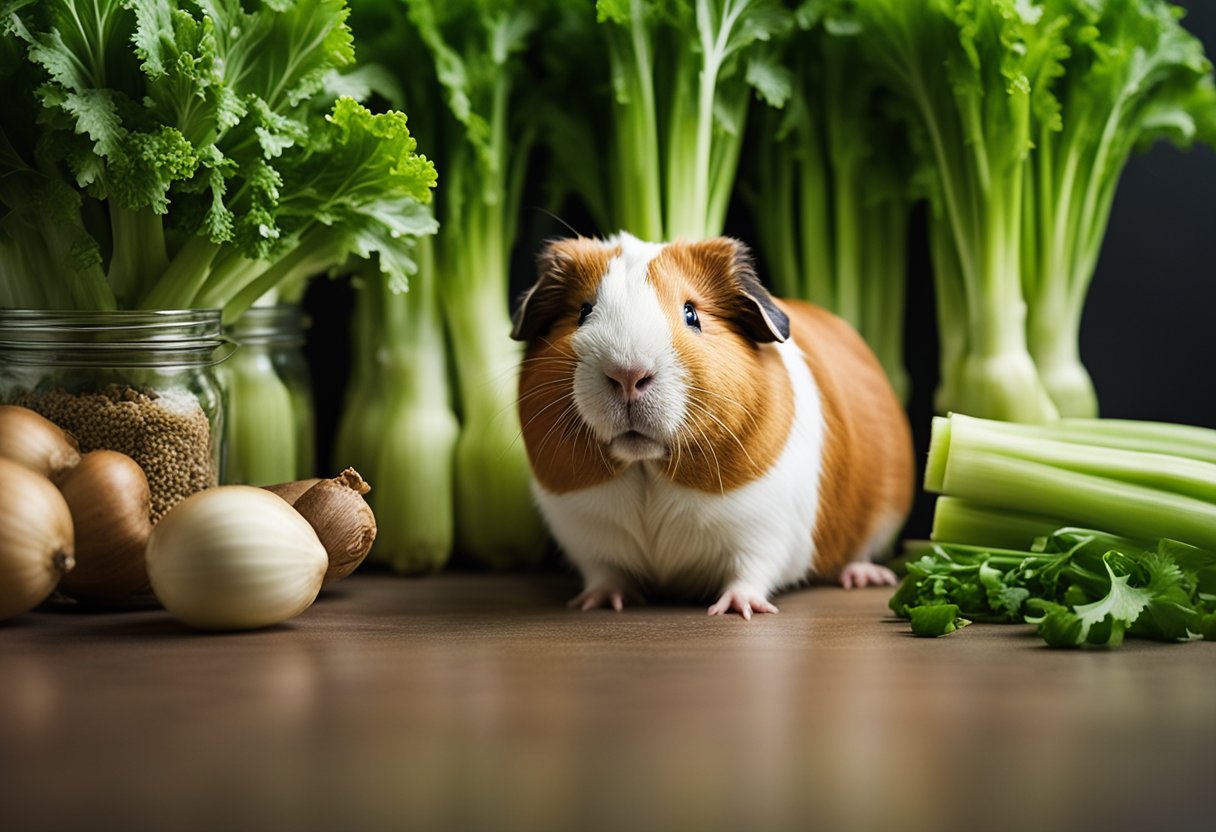
What are the effects of feeding guinea pigs large amounts of celery?
Feeding guinea pigs large amounts of celery can lead to digestive issues such as diarrhea and bloating. Celery is high in fiber, which can cause digestive discomfort when consumed in large quantities. Additionally, celery contains calcium and oxalates, which can cause urinary tract problems and bladder stones in guinea pigs if consumed in excess [1].
How often should guinea pigs be fed celery to maintain a balanced diet?
Celery should be fed to guinea pigs in moderation. A 1-3 tablespoon-sized amount of celery is enough for one guinea pig [2]. It is recommended to feed your guinea pig a variety of vegetables to maintain a balanced diet.
What are the potential dental health issues for guinea pigs consuming celery?
Celery is a hard and crunchy vegetable that can help keep your guinea pig’s teeth clean and healthy. However, feeding guinea pigs too much celery can lead to dental health issues such as overgrown teeth. It is important to provide your guinea pig with a variety of vegetables to ensure they are getting all the nutrients they need while also maintaining good dental health [3].
Are celery leaves safe for guinea pigs to eat, and in what quantities?
Celery leaves are safe for guinea pigs to eat and can be a good source of vitamins and minerals. However, celery leaves should be fed in moderation as they are high in calcium and oxalates [4].
What is the appropriate serving size of vegetables for a guinea pig daily?
The appropriate serving size of vegetables for a guinea pig daily is approximately one cup of fresh vegetables per day. This can include a variety of vegetables such as kale, bell peppers, and carrots. It is important to introduce new vegetables slowly to your guinea pig’s diet to avoid digestive issues [2].
What vegetables should be avoided in a guinea pig’s regular diet?
Vegetables that are high in calcium and oxalates should be avoided in a guinea pig’s regular diet. These include spinach, beet greens, and parsley. Additionally, vegetables that are high in sugar such as carrots and fruits should be fed in moderation [2].
